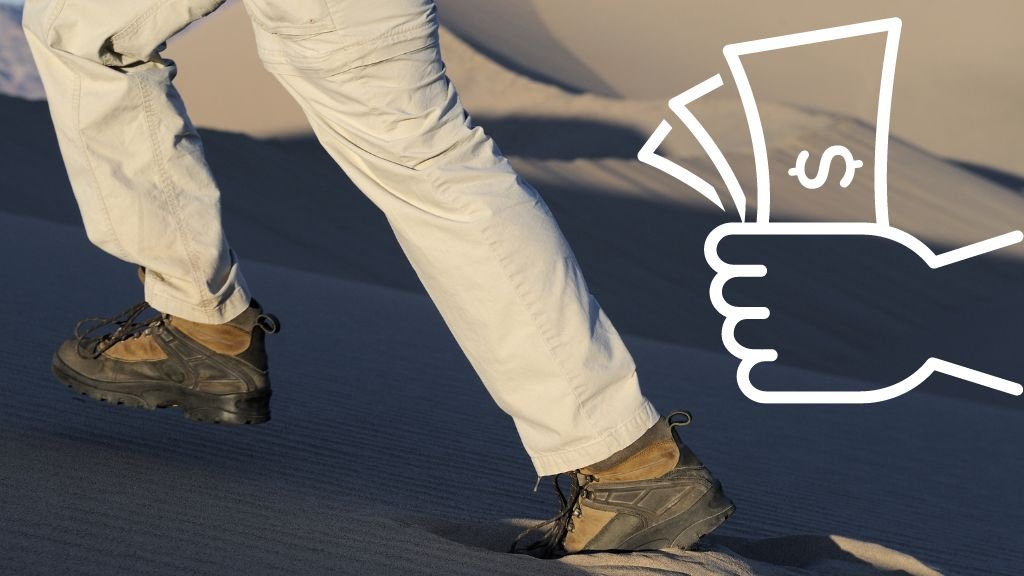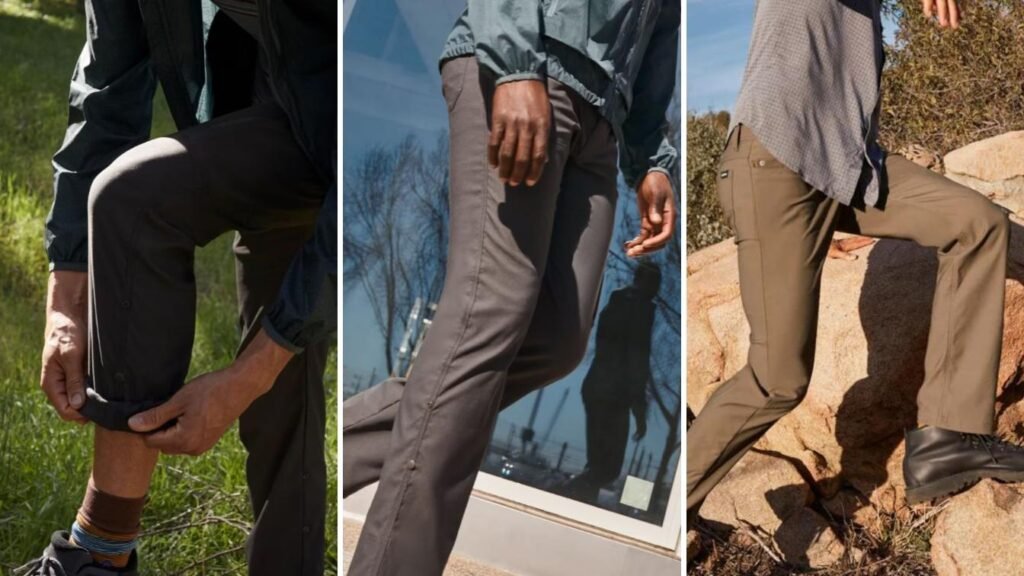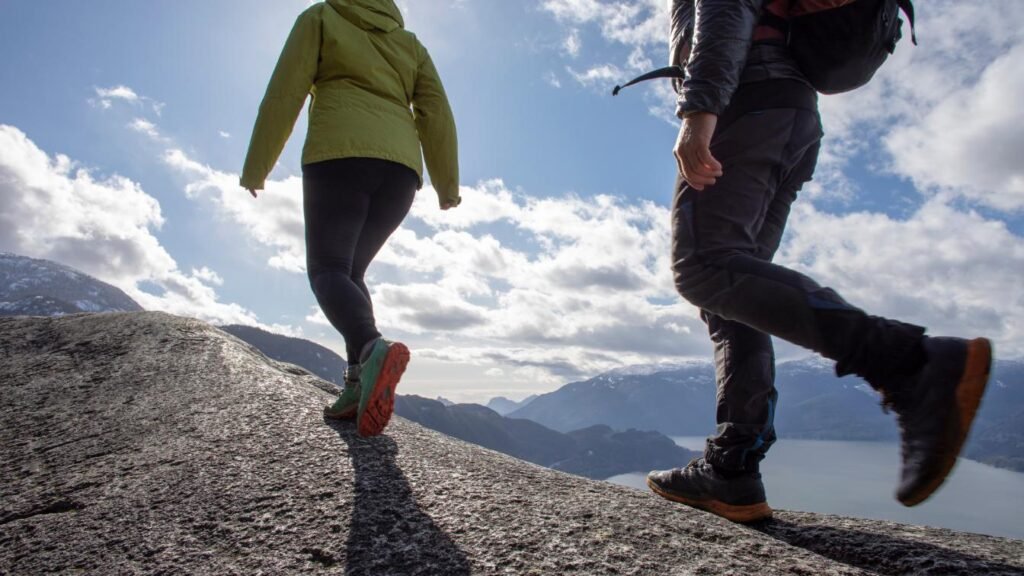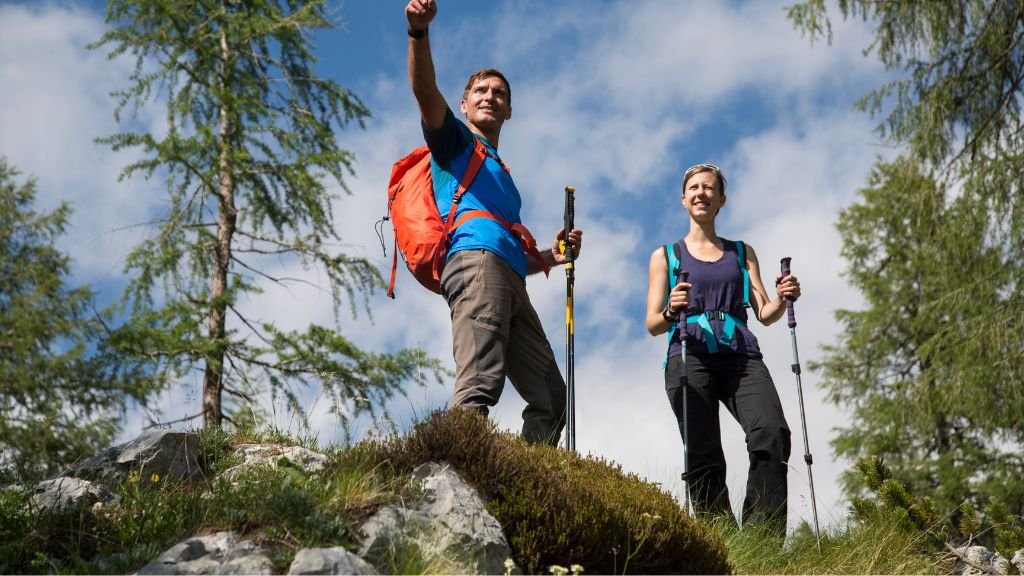You might wonder as you prepare for your next trail, why do those specialized hiking pants hit the wallet harder than your average jeans? They seem like just another piece of clothing, yet the price tags tell a different story.
This isn’t about fancy brand names or fashion statements. It’s practicality wrapped in fabric.
As we trail through the four key factors that contribute to the costliness of hiking pants, you’ll discover that there’s more than meets the eye.
From durability designed to withstand nature’s challenges to the technology that keeps you comfortable on the move, this article will unpack the reasons, helping you understand the true value behind every dollar spent.
Why Are Hiking Pants So Expensive?
Hiking pants come with a hefty price tag because they are no ordinary trousers.
- They are the result of innovative design where every stitch counts for comfort and mobility.
- The quality of materials is top-notch, often incorporating advanced fabrics that adapt to weather and terrain.
- These pants are built to last, offering durability that sees you through countless trails without a hitch.
- And let’s not forget branding – companies invest in their image and reputation, positioning these pants as essential gear for the serious hiker.
Each aspect, from the drawing board to the rugged paths you explore, justifies the investment in your hiking wardrobe.
The Cost of Innovation and Design
When you buy a pair of hiking pants, you’re not just paying for the piece of clothing. You’re also paying for all the thought, tests, and clever ideas that went into making them.
Let’s dive into why this adds to the cost.
Research and Development
Imagine a team of smart people focusing all their energy on making the best possible pants for hiking. They think about problems you might face, like rain, wind, or rough rocks.
This team works long hours, tries out new ideas, and tests different fabrics until they find the perfect mix that keeps you safe, dry, and comfortable.
All these efforts mean spending money, which is part of the price you see on the tag.
- Durability: They make sure the pants can take a lot of wear and tear.
- Flexibility: The pants need to move with you, so you feel free when you climb or jump.
- Weather Resistance: Whether it’s hot, cold, or rainy, your pants should help you handle it.
Every time you pull on those hiking pants, remember that they’re packed with science and care to help you tackle the wild outdoors.
Specialized Features
Now let’s talk about those extras that set hiking pants apart from your everyday trousers.
- UV Protection: To shield you from harmful sun rays, especially at high altitudes where UV levels are higher.
- Moisture-Wicking: This means sweat moves away from your skin to keep you dry.
- Quick-Dry Technology: If you get wet, these pants won’t stay soggy for long.
- Reinforced Areas: Parts of the pants, like the knees and seat, are stronger to avoid tears.
They might look like normal pants, but every feature has a job to protect you. Those extra touches need extra work to design and make, which ups the price.
But when you’re out there facing the elements, each one is worth every penny for the confidence and comfort they give you.
Quality of Materials
When you’re out in the great outdoors, the last thing you want is for your pants to let you down. It’s crucial that they’re made of stuff that can stand up to the test.
Here’s why those materials matter and how they add to the price.
High-Tech Fabrics
Think of hiking pants as your armor against nature. They are usually made of materials that are super light so you can move easily but also strong to not rip on sharp rocks.
These fabrics are often born from years of science work, blending things like nylon, spandex, and polyester in a special way.
- Lightweight: You can walk for hours and not feel weighed down.
- Durable: They resist tears and can last for many hikes.
- Comfort: These materials can stretch, which means you won’t feel trapped in your pants.
You might pay more, but remember, they’re keeping you cozy, safe, and ready for action.
Sustainability and Ethical Manufacturing
More and more, companies are making sure they do the right thing by nature and people. This means hiking pants are often made with materials that are kinder to the planet, like recycled fabrics.
It also means the workers who make them are treated well and paid fairly.
- Eco-friendly: Materials that don’t harm the earth cost more but are better for everyone in the long run.
- Fair Labor: When workers are paid fairly, those costs are part of what you pay.
Yes, this can make hiking pants pricier. But when you wear them, you’re helping to look after the world and supporting good jobs.
So, each step you take in those pants is a step towards a better future. That’s something worth investing in, isn’t it?
Durability and Longevity
Cost-Per-Wear
When you shop for hiking pants, the price tag might make you blink. But think about how these pants save you money over time.
Good hiking pants last a lot longer than regular ones. They can take a beating from rocks, sticks, and even weather like heavy rain or snow and still look good!
- Long-lasting: Imagine having pants that you can wear hike after hike, year after year.
- Tough Conditions: Whether you’re crossing rivers or scrambling up hills, your pants won’t give up on you.
- Save Money: Buy one pair of great pants instead of replacing cheaper ones all the time.
In short, you spend more once but save cash because you don’t have to buy new hiking pants often.
Warranty and Repairs
Some brands know their pants are tough and they stand by them with a warranty. If something goes wrong, they might fix it for free or send you a new pair. This is peace of mind that cheaper pants won’t give you.
Here’s what to look for:
- Good Warranty: Brands like Patagonia, The North Face, and Arc’teryx might cost more, but their warranties cover you for years.
- Repair Services: Some brands will fix your pants if they rip or the zipper breaks. This means you keep your favorite pants longer!
Think about it. If your pants come with a promise that they’ll last or get repaired, it’s like paying upfront for pants that keep going as long as you do. That’s real value right there.
So, next time you put on those hiking pants, you can feel sure that they’re an investment in lots of adventures to come.
Branding and Market Position
When you’re looking at hiking pants and wondering about the price, the brand’s name and what it stands for can tell you a lot. Here’s how branding can shoot the price up, and why that might be a good thing for you.
Brand Value
Some brands are like stars in the outdoor gear world. They’ve been around for years and have built trust with customers. Their logo on your pants is like a promise that you’re getting some of the best gear out there.
What makes a brand strong?
- Trust: When a brand has been making hiking pants for ages, you believe they’re good at it.
- Quality: A top brand means top materials and workmanship.
- Status: Wearing a known brand can feel pretty good because it’s like being part of a club.
So when the price seems high, remember that part of what you’re paying for is this trust and reputation that the brand has worked hard to build.
Research and Marketing
But it’s not just the name. These brands pour money into finding out what works best. They test their pants in all kinds of wild places to make sure they hold up.
Then, they tell the world about it. That costs money – which gets added to the price tag.
How do brands spread the word?
- Ads: Ever seen an ad with a hiker on top of a mountain? That catches your eye, but it isn’t cheap to make.
- Endorsements: If a famous hiker says these are the pants they wear, you listen. Those hikers get paid to share their gear choices with you.
All this effort makes sure that when you slide into those hiking pants, you’ve got the backing of expert knowledge and a bunch of excited customers.
While you might pay more upfront, you also jump on the bandwagon of a product that’s tried, tested, and talked about – and that’s something special.
Tips for Finding Value in Hiking Pants
Hiking pants can be pricey, but you can find great value if you know where to look. Here are practical ways to get the best bang for your buck without compromising on quality.
Seasonal Sales and Discounts
Big sales often happen when seasons change. Stores want to clear out last season’s gear to make room for new stuff. That’s your chance!
- End of Winter: Brands cut prices on cold-weather items.
- Mid-Summer: Look for discounts as stores prepare for fall.
Head to these places for deals:
- Outdoor Retailers: Shops like REI or Backcountry have yearly sales.
- Brand Websites: Sign up for newsletters to get first dibs on sale alerts.
- Outlet Stores: They sell last season’s goods at lower prices.
When you spot those sales, go for quality pieces. They’ll serve you well and won’t wear out fast.
Investing in Versatility
You want hiking pants that can handle more than one job. Some pants can turn into shorts or have pockets that fit different tools. This way, you buy less and do more.
Look for features like:
- Zip-Off Legs: Perfect for changing weather.
- Adjustable Waistbands: For a snug fit, always.
- Pockets: More pockets mean carrying more snacks or a map easily.
Versatile pants work whether you’re in the hot deserts of Arizona or the cool forests of Oregon. Choose wisely, and your pants will be right for many adventures.
Quality vs. Quantity
It’s tempting to buy lots of cheap pants, but they tear or fade fast. Buy one or two good pairs instead. They might cost more now, but they save you money because you won’t need to replace them often.
Why quality wins:
- Tough Fabric: Good hiking pants resist tears from thorns or rocks.
- Better Fit: They move with you, making your hike comfy.
- Smart Design: Features like water resistance keep you dry.
When you buy quality, you’re not just buying pants. You’re investing in comfort, protection, and plenty of happy trails.
When you’re looking at hiking pants and their high prices, think about these tips. With a little planning and smart shopping, you’ll find the perfect pair that offers both value and performance.
Alternatives to Expensive Hiking Pants
Hiking is a great way to explore nature, but gear can cost a lot. If you want to save money and still enjoy the trails, here are some smart choices for your legs.
Less Known Brands
You don’t always need big-name brands. Less-known brands often make great pants too, and they can cost less. Here’s how to find them:
- Outdoor Forums: People talk about their favorite gear here. You can learn a lot.
- Online Reviews: Websites like Amazon have user reviews. See what others say before you buy.
Stores to check out:
- Local Outdoor Shops: They might carry brands that are big on value.
- Sports Stores: Sometimes they have their own brands that are good and affordable.
Brands like Columbia offer quality without a huge price tag. Look around, compare prices, and read reviews. You might find a hidden gem!
DIY Modifications
Want to save money? Try turning regular pants into hiking pants. You just need a bit of creativity.
Here’s what you can do:
- Add Pockets: Sew on cargo pockets for extra space.
- Strengthen Knees: Sew patches on the inside to make them tougher.
- Waterproofing Spray: Make any pants water-resistant with a spray you can buy at a shoe or camping store.
Old jeans or work pants can become trail-ready with a little work. This way, you use what you already have, and you don’t spend money on new pants.
When you try these alternatives, remember to look for comfort and how well the pants can move with you.
Whether you find a good deal from a less-known brand or modify a pair you already own, you can hit the trail without breaking the bank.
Conclusion
The steep cost of hiking pants can seem daunting, but it’s the price for durability, comfort, and technology that keeps you marching happily on any trail.
By leveraging sales, valuing versatile features over quantity, or getting creative with DIY, you can strut into the great outdoors without your wallet feeling lighter.
Whether you’re scaling peaks or traversing valleys, remember that the right pair of hiking pants is more than an item in your closet. It’s a companion on your journey to explore, experience, and enjoy the endless beauty nature has to offer!

Lukas Heller
Hey there! I’m Lukas, co-founder of BigfootHiking.com, alongside my adventurous wife Martha. Originally from Germany, I landed in Phoenix, Arizona, in 2015, where I’ve been scouting out new trails ever since (though they’re getting scarce!). By day, I’m a software developer, but my heart belongs to hiking – I’m always plotting our next trip. When I’m not coding or on the trails, you’ll find me hanging out with our Pit Bull, Zeus.





